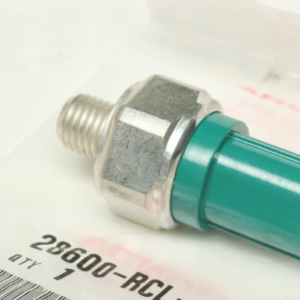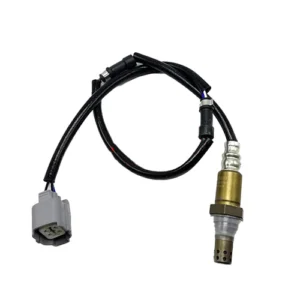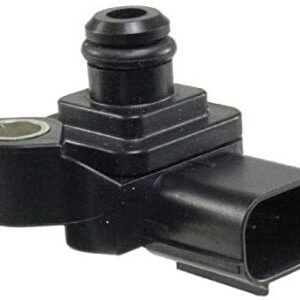**Unveiling the Hidden Hero: The Knock Sensor**
In the intricate realm of automotive engineering, where every component plays a crucial role in the symphony of a smoothly running vehicle, one silent hero often remains unnoticed—the knock sensor. While its name might not evoke awe or fascination at first glance, its functionality and significance are paramount in ensuring the optimal performance and longevity of modern engines.
**Understanding the Essence: What is a Knock Sensor?**
A knock sensor, also known as a detonation sensor, is a small yet mighty device nestled within the engine block of most internal combustion engines. Its primary function is to detect abnormal combustion, commonly referred to as “knocking” or “pinging,” and promptly relay this information to the engine control unit (ECU). This vital feedback loop allows the ECU to make real-time adjustments to prevent potential damage to the engine.
**The Menace of Engine Knock**
Before delving into the intricacies of how knock sensors operate, it’s essential to grasp the menace they aim to mitigate—engine knock. Engine knock occurs when the air-fuel mixture in the combustion chamber ignites spontaneously or unevenly, producing erratic pressure waves that collide with the piston as it moves upward. This phenomenon leads to undesirable vibrations, increased stress on engine components, and, if left unchecked, severe engine damage.
Several factors can contribute to engine knock, including low-quality fuel, excessive carbon deposits, high engine temperatures, and aggressive engine tuning. Regardless of the cause, the repercussions of unchecked knocking can range from reduced performance and fuel efficiency to catastrophic engine failure.
**The Silent Guardian: How Does a Knock Sensor Work?**
Despite its modest size, the knock sensor’s operation is anything but simple. Typically mounted on the engine block or cylinder head, the knock sensor is designed to detect the distinct acoustic signature produced by engine knock. This involves the sensor’s piezoelectric crystal or ceramic element, which generates an electrical signal when subjected to mechanical vibrations.
When the engine experiences knocking, the resulting vibrations reach the knock sensor, causing the piezoelectric element to deform slightly and produce a voltage signal proportional to the intensity of the knock. This signal is then transmitted to the ECU, which interprets it and responds by adjusting ignition timing, fuel delivery, or other parameters to prevent further knocking.
**The Unseen Benefits: Advantages of Knock Sensors**
While the primary role of knock sensors is to safeguard the engine against harmful knocking, their benefits extend beyond mere damage prevention:
1. **Optimized Performance:** By continuously monitoring engine knock and making necessary adjustments, knock sensors help optimize ignition timing and fuel delivery, maximizing engine performance and efficiency.
2. **Enhanced Durability:** By preventing excessive knocking, knock sensors contribute to the longevity of engine components, reducing the risk of premature wear and tear.
3. **Compatibility with Advanced Technologies:** Knock sensors are integral to the operation of modern engine management systems, including turbocharging, direct fuel injection, and variable valve timing, enabling the seamless integration of advanced technologies for improved performance and efficiency.
4. **Diagnostic Capabilities:** In addition to real-time monitoring, knock sensors also facilitate onboard diagnostics by detecting irregularities in combustion, aiding mechanics in diagnosing and resolving engine-related issues more efficiently.
**Looking Ahead: The Evolution of Knock Sensing Technology**
As automotive manufacturers continue to push the boundaries of performance, efficiency, and emissions control, the role of knock sensors remains pivotal in achieving these objectives. The evolution of knock sensing technology is marked by advancements in sensor design, signal processing algorithms, and integration with other engine management systems.
Future iterations of knock sensors are likely to incorporate more sophisticated materials and sensor arrays for enhanced sensitivity and reliability. Additionally, machine learning algorithms may be employed to analyze knock signatures more effectively, enabling even finer adjustments to engine parameters in real-time.
**In Conclusion: The Unsung Hero**
In the grand tapestry of automotive engineering, where every component plays a crucial role, the knock sensor stands out as a silent sentinel, tirelessly guarding against the ravages of engine knock. Its unassuming presence belies its critical importance in ensuring the smooth operation, performance, and longevity of modern engines. As automotive technology continues to evolve, the knock sensor remains an indispensable ally, quietly ensuring that engines run smoothly, efficiently, and reliably for years to come. So, the next time you turn the key and hear the engine purr, remember the unsung hero working diligently behind the scenes—the humble knock sensor.
Only 5 left in stock (can be backordered)
$18,926.31
**Unveiling the Hidden Hero: The Knock Sensor**
In the intricate realm of automotive engineering, where every component plays a crucial role in the symphony of a smoothly running vehicle, one silent hero often remains unnoticed—the knock sensor. While its name might not evoke awe or fascination at first glance, its functionality and significance are paramount in ensuring the optimal performance and longevity of modern engines.
**Understanding the Essence: What is a Knock Sensor?**
A knock sensor, also known as a detonation sensor, is a small yet mighty device nestled within the engine block of most internal combustion engines. Its primary function is to detect abnormal combustion, commonly referred to as “knocking” or “pinging,” and promptly relay this information to the engine control unit (ECU). This vital feedback loop allows the ECU to make real-time adjustments to prevent potential damage to the engine.
**The Menace of Engine Knock**
Before delving into the intricacies of how knock sensors operate, it’s essential to grasp the menace they aim to mitigate—engine knock. Engine knock occurs when the air-fuel mixture in the combustion chamber ignites spontaneously or unevenly, producing erratic pressure waves that collide with the piston as it moves upward. This phenomenon leads to undesirable vibrations, increased stress on engine components, and, if left unchecked, severe engine damage.
Several factors can contribute to engine knock, including low-quality fuel, excessive carbon deposits, high engine temperatures, and aggressive engine tuning. Regardless of the cause, the repercussions of unchecked knocking can range from reduced performance and fuel efficiency to catastrophic engine failure.
**The Silent Guardian: How Does a Knock Sensor Work?**
Despite its modest size, the knock sensor’s operation is anything but simple. Typically mounted on the engine block or cylinder head, the knock sensor is designed to detect the distinct acoustic signature produced by engine knock. This involves the sensor’s piezoelectric crystal or ceramic element, which generates an electrical signal when subjected to mechanical vibrations.
When the engine experiences knocking, the resulting vibrations reach the knock sensor, causing the piezoelectric element to deform slightly and produce a voltage signal proportional to the intensity of the knock. This signal is then transmitted to the ECU, which interprets it and responds by adjusting ignition timing, fuel delivery, or other parameters to prevent further knocking.
**The Unseen Benefits: Advantages of Knock Sensors**
While the primary role of knock sensors is to safeguard the engine against harmful knocking, their benefits extend beyond mere damage prevention:
1. **Optimized Performance:** By continuously monitoring engine knock and making necessary adjustments, knock sensors help optimize ignition timing and fuel delivery, maximizing engine performance and efficiency.
2. **Enhanced Durability:** By preventing excessive knocking, knock sensors contribute to the longevity of engine components, reducing the risk of premature wear and tear.
3. **Compatibility with Advanced Technologies:** Knock sensors are integral to the operation of modern engine management systems, including turbocharging, direct fuel injection, and variable valve timing, enabling the seamless integration of advanced technologies for improved performance and efficiency.
4. **Diagnostic Capabilities:** In addition to real-time monitoring, knock sensors also facilitate onboard diagnostics by detecting irregularities in combustion, aiding mechanics in diagnosing and resolving engine-related issues more efficiently.
**Looking Ahead: The Evolution of Knock Sensing Technology**
As automotive manufacturers continue to push the boundaries of performance, efficiency, and emissions control, the role of knock sensors remains pivotal in achieving these objectives. The evolution of knock sensing technology is marked by advancements in sensor design, signal processing algorithms, and integration with other engine management systems.
Future iterations of knock sensors are likely to incorporate more sophisticated materials and sensor arrays for enhanced sensitivity and reliability. Additionally, machine learning algorithms may be employed to analyze knock signatures more effectively, enabling even finer adjustments to engine parameters in real-time.
**In Conclusion: The Unsung Hero**
In the grand tapestry of automotive engineering, where every component plays a crucial role, the knock sensor stands out as a silent sentinel, tirelessly guarding against the ravages of engine knock. Its unassuming presence belies its critical importance in ensuring the smooth operation, performance, and longevity of modern engines. As automotive technology continues to evolve, the knock sensor remains an indispensable ally, quietly ensuring that engines run smoothly, efficiently, and reliably for years to come. So, the next time you turn the key and hear the engine purr, remember the unsung hero working diligently behind the scenes—the humble knock sensor.
| Weight | 0.04 kg |
|---|---|
| Warehouse | Inventory at warehouse 2 |



Get E-mail updates about our latest products and special offers.
Sensors and More is Jamaica’s ultimate online auto parts store. Established in 2020, we specialize in genuine electrical parts for Japanese, Read more…
Reviews
There are no reviews yet.